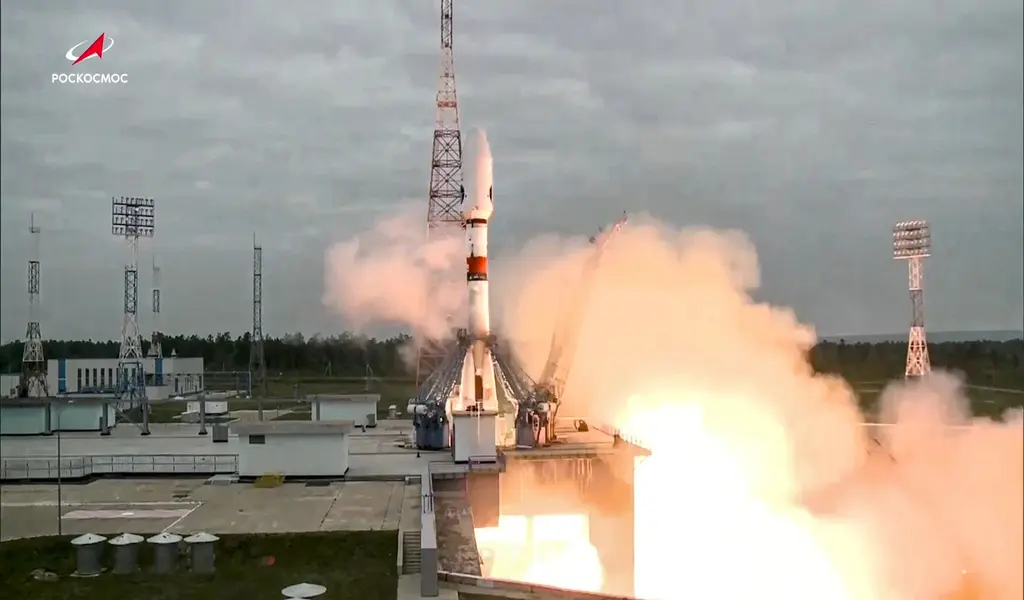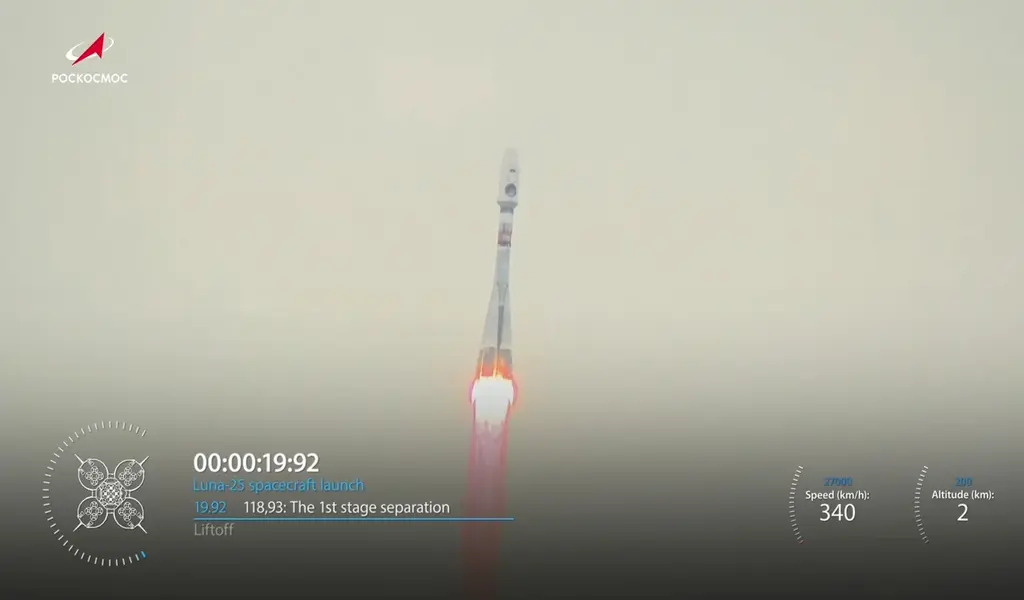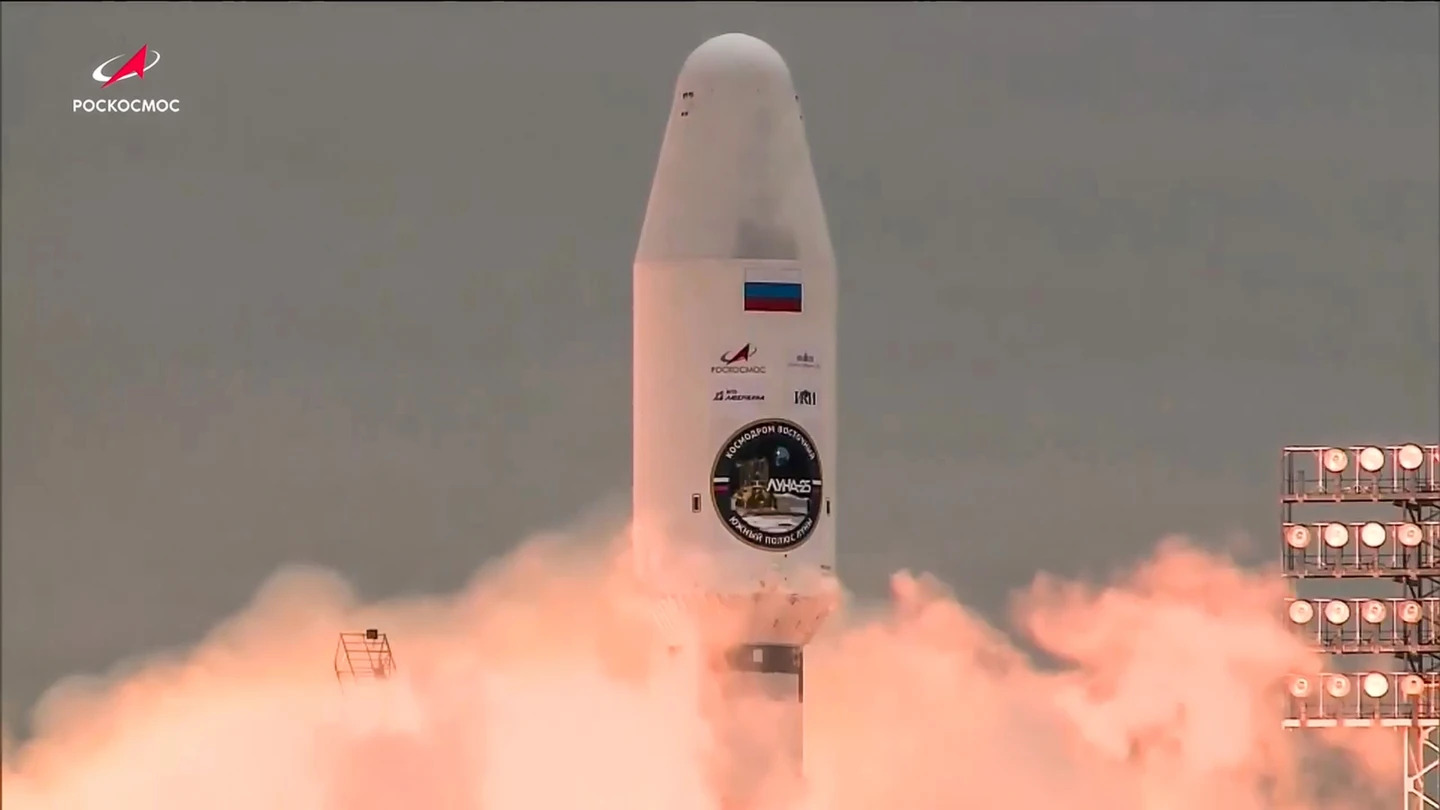News
Russia Launches Historic 1st Lunar Mission In Pursuit Of Moon’s Southern Pole In Nearly 50 Years

(CTN NEWS) – On Friday, a momentous event unfolded as Russia embarked on its first lunar mission in nearly half a century, launching a rocket carrying a lunar landing vehicle.
This marks a significant step in the nation’s space endeavors, with Russia competing head-to-head with an Indian spacecraft for the honor of achieving a groundbreaking feat.
The spacecraft, named Luna-25, represents Russia’s reentry into lunar exploration after a hiatus since 1976, during the era of the Soviet Union. Taking off from the Vostochny spaceport located in the Far East, this mission holds great promise for the country’s space ambitions.
The upcoming date of August 23 holds particular significance, as it’s when the Russian spacecraft is projected to touch down on the lunar surface.
Coincidentally, this day aligns with the launch date of an Indian spacecraft, which took off on July 14. The journey to reach the moon’s vicinity will span approximately 5.5 days for the Russian spacecraft.
Lunar Maneuvers: Competing for the Moon’s Southern Pole and Russia’s Ascent in Global Space Race
Upon its arrival, it will commence orbiting the moon, maintaining a distance of approximately 100 kilometers (62 miles) for a duration ranging from three to seven days.
Historically, successful moon landings have been achieved by only a handful of nations, including the Soviet Union, the United States, and China.
In the present era, Russia and India are in a spirited competition to claim the distinction of being the first to land at the moon’s southern pole.
The Russian space agency, Roscosmos, has expressed its intent to secure “assured access to the lunar surface” for Russia, effectively showcasing the nation’s prowess in delivering payloads to the moon.
This mission serves as a testament to Russia’s capabilities on the global space stage.
Renowned Russian space analyst Vitaly Egorov has emphasized that the primary impetus behind these lunar endeavors is not solely scientific exploration, but rather a display of political competition between global superpowers like the USA and China, accompanied by the aspirations of numerous smaller nations yearning for recognition as space superpowers.
Impact of Sanctions on Russia’s Space Program and Evolving Lunar Exploration Strategies
Sanctions have imposed obstacles on Russia’s space program in the aftermath of its incursion into Ukraine, creating challenges in accessing Western technology.
Analysts suggest that the original plan to include a compact moon rover on the Luna-25 mission was abandoned in favor of a more streamlined and dependable spacecraft.
Egorov pointed out that domestic electronic components tended to be bulkier, whereas foreign ones offered a lighter alternative.
The primary objective of Roscosmos remains centered on lunar exploration, aiming to recapture the Soviet expertise of yesteryears while adapting to contemporary methods.
A significant aspect of this endeavor involves investigating the presence of water on the lunar surface.
As revealed by a live camera feed from Roscosmos, the Luna-25 achieved a flawless launch from the Vostochny Cosmodrome situated in Russia’s Far East.
Russian President Vladimir Putin’s ambitious spaceport initiative holds paramount importance in his vision to elevate Russia’s status as a space superpower and to shift the operations of Russian rockets from the Baikonur Cosmodrome located in Kazakhstan.
Indian Spacecraft’s 2019 Moon Landing Attempt and the Intriguing Potential of Lunar South Pole
In a previous endeavor in 2019, an Indian spacecraft met with an impact upon the moon’s surface during its attempt to land at the lunar south pole.
Scientists hold a distinct fascination for the moon’s southern polar region, driven by the belief that reservoirs of water might exist within the perpetually shadowed craters.
This potentially frozen water could serve as a valuable resource for future explorers, enabling the production of oxygen and rocket propellant.
Ed Bloomer, an astronomer associated with the Royal Observatory in Greenwich, Britain, emphasized that the moon remains largely pristine, bearing an untainted record of its entire history. Its unblemished surface, unlike anything found on Earth, serves as a unique laboratory.
The forthcoming Luna-25 mission is geared towards the collection of lunar rock and dust specimens.
According to Bloomer, comprehending the moon’s climatic conditions is imperative before establishing any lunar base. Failing to do so might lead to scenarios where constructed structures need to be prematurely shut down due to the abrasive effects of lunar erosion.
RELATED CTN NEWS:
Joe Biden Unveils New Proposals For Further Restrictions On Foreign Investments By U.S. Corporations
Perception Gap: Majority of Registrars Believe Brides Face Challenges In Negotiating Nikahnama Terms
IHC Rejects Immediate Suspension Of Imran Khan’s Sentence In Toshakhana Case































